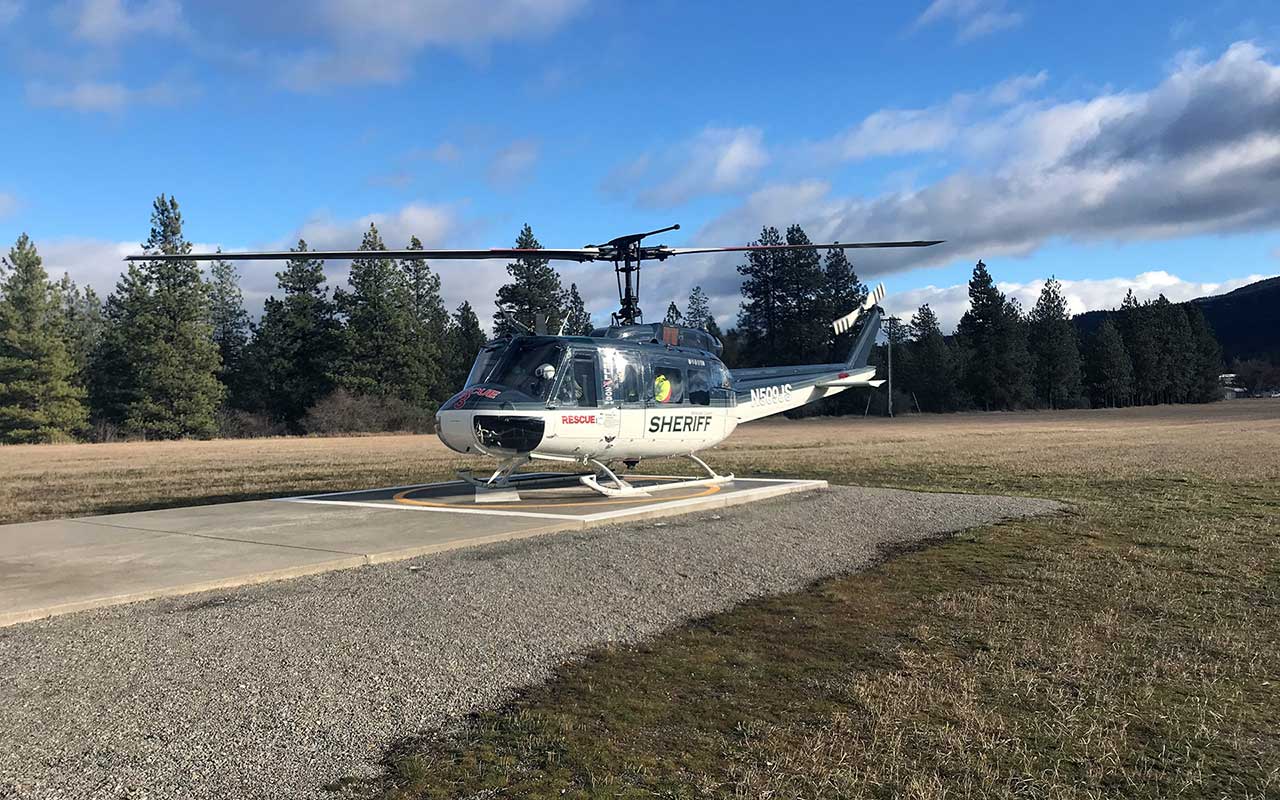
SFD Paramedics Train for Life-Saving Flights
Jeff Humphrey, Media Content Coordinator, No Phone Number Available
Tuesday, December 18, 2018 at 11:04 a.m.
Some of the same Spokane firefighters who drive to calls for help, will soon be flying to our remote medical emergencies inside Spokane County's new Rescue 3 helicopter.
"Well that's the whole idea of being able access patients who are inaccessible by other means and being able to bring advanced care to the point of injury," explained Bob Nixon, a paramedic with the Spokane Fire Department.
Air 1 and Air 2, from the Spokane Sheriff's Office, were already performing search and rescue missions.
Now the Aviation unit has obtained a government surplus UH-1H Huey that's super-sized the Tactical Flight Team's capabilities.
"So with the addition of the Huey, that gives us the ability to actually remove those people from that wilderness environment and also, bringing in the medics, gives us the ability to give that immediate care to those persons who are hurt," said Sgt. Jeff Thurman of the Spokane County Sheriff’s Office.
Speed is the name of the game when it comes saving lives so paramedics at Spokane Fire Station 8, the closest to Felts Field, are training up for delivering advanced medical care from the sky.
The problem is, helicopters are top heavy and if you have to put one down in the water, the fuselage rolls over like a dead fish and sinks.
"That's where the motor is at. That's where the rotors system is at. That's where it's the heaviest. So as soon as it hits that water, it’s just going flip right over because of the weight," Thurman added.
Fortunately, the Water Survival School at Fairchild Air Force Base teaches air crews how to handle ditching a chopper at sea.
On Fridays, the air base's swimming pool turns into a high-tech dunk tank.
Paramedics board the Modular Egress Training System and then, try to develop the skills and confidence they need to get out of the METS, upside down and underwater.
"Ditching, ditching, ditching! Full roll on the left side," shouts an instructor as a hoist lowers the module into the pool and then inverts the mock chopper.
Passengers aboard the METS find the roll confusing; their seats and safety harnesses are now unfamiliar traps, leaving firefighters literally wondering which way is up.
"Oh, training with the Air Force airmen out here, they are consummate professionals. Anytime we get to come out here and train with them we're all better for it," Nixon said of the instructors who dive below the surface to safeguard their students.
Paramedics learn how to keep water out of their nose, unbuckle seat belts and navigate their way to exits before they run out of air.
Fairchild instructors strive for the most realistic training possible. On the last dunking, airmen simulate ditching in total darkness.
"Actually adding the blacked-out goggles, for me, brought a sense of calm. There's less visual stimulation and all you do is go into a calm mode and feel your way out,” recalled Nixon.
And that's the underwater wherewithal instructors are looking for.
"Since they've had the chance to practice here in the pool at Fairchild, with experienced instructors, that they do have the tools to safely and calmly be able to get out of that aircraft, get to the surface and get themselves recovered,” said SSgt. Michael Bilodeau, an instructor at the USAF Water Survival School.
And that also includes evacuating the injured patients or lost hikers who could soon be hitching a ride to safety on the Sheriff's Rescue 3 helicopter.

More About...
- Fairchild Air Force Base
- Rescue 3
- Spokane Fire Department
- Spokane Sheriff’s Office
- USAF Water Survival School
